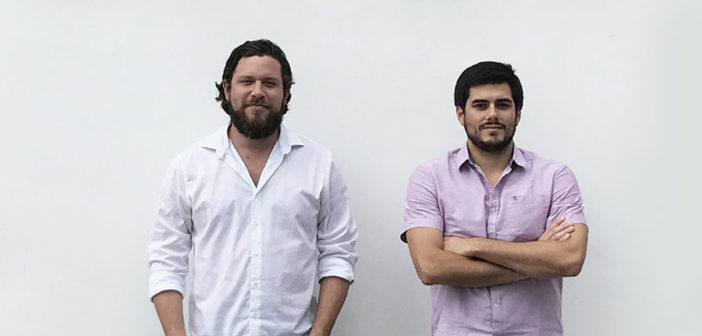The minds behind some of the year’s best and buzziest ads
Hacking voice recognition devices. Turning client stores into polling places. Helping schoolchildren with access to clean clothes. Making a bag of chips that can detect booze on your breath and call you an Uber.
The creative directors and associate creative directors on the list below are changing the shape of advertising in major ways, and exulting in the resulting engagement from consumers. Read below for more on these game changers, and the work that’s making them, and their clients, famous.
Note: Instead of one big list of U.S. creatives, this year we’ve divided it into smaller lists based on rank. We have 1) chief creative officers, 2) executive creative directors and group creative directors, 3) creative directors and associate creative directors (this list) and 4) art directors and copywriters.We’ve also gone international with a separate list of 10 global creative chiefs.
Juan Peña and Ricardo Casal
Associate Creative Directors, David
In their six years at David, Peña and Casal (pictured above) have orchestrated many of its most buzzy campaigns, from Macma’s “Man Boobs” to Heinz’s Mad Men ads to Burger King’s Google Home stunt for the Whopper.
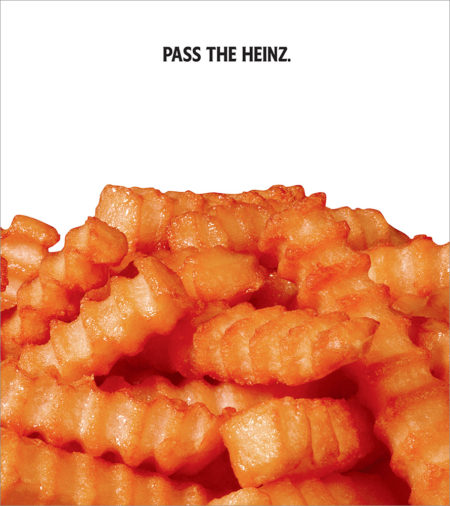
A huge Mad Men fan, Peña was thrilled to bring the “Pass the Heinz” ads into the real world. “It was a dream come true sharing creative credits with Don Draper,” he says. “Taking a campaign from your favorite TV show and making it happen in real life is an unforgettable experience.”
Casal is still smiling about hijacking Google Home devices to get them talking about the Whopper. “We knew we were going to get a couple of people concerned about privacy and invasive advertising,” he says. “We also had Wikipedia blocking us, then Google blocking us, and we were at the office trying to fight them back. But we won the corporate feud. Better yet, we got everyone talking about the Whopper, even robots. That was amazing.”
Peña and Casal are in love with advertising, which is what fuels them. “Work hard. Then work harder. We truly believe talent can be outperformed by passion and commitment,” says Peña. “It’s not just a profession for us, this is our hobby.”
Adds Casal: “It’s something like Rihanna’s song—all I know is work work work. The rest I don’t understand, but I just go along with it and enjoy it. Also, we love paying attention to everything around us, but always from our desktop. The less we move, the more time we have to come up with new ideas. It’s all about thinking and thinking and thinking.”
Jennifer Barclay
Associate Creative Director, Roar Groupe
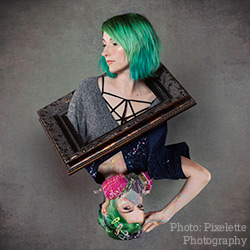 Barclay is the art director on the adorably geeky, pop-culture-inspired, handmade scenes that Arby’s posts to Twitter and Instagram every few days. The nerdy references are completely authentic coming from Barclay, herself a celebrated cosplayer and passionate gamer.
Barclay is the art director on the adorably geeky, pop-culture-inspired, handmade scenes that Arby’s posts to Twitter and Instagram every few days. The nerdy references are completely authentic coming from Barclay, herself a celebrated cosplayer and passionate gamer.
“I’ve always been a nerd, even before it was something you’d consider bragging about,” she says. “Most big brands gloss right over or condescend to these audiences, so tapping into interests I’ve had for my entire life to help Arby’s speak authentically is a rare treat.”
While the Arby’s posts are undeniably goofy, they’re also finely crafted.
Who do you call when you want some pepperoni? pic.twitter.com/mHkmtquErg
— Arby's (@Arbys) June 5, 2017
“The artist in me loves that we are creating tiny pieces of art by hand from materials that are, to most people, quickly discarded paper trash,” Barclay says. “The nerd in me loves seeing these niche communities get excited about our content and watching them catch each inside joke or reference.” With almost a million people awaiting her latest geeky creation, Barclay couldn’t be happier in her little corner of the social-media world. “It’s rare in this industry that amazing clients, an adept team and your personal passions all come together,” she says. “I’m acutely aware of just how special my situation is.”
Matt Keats and Matt Miller
Associate Creative Directors, Venables Bell & Partners
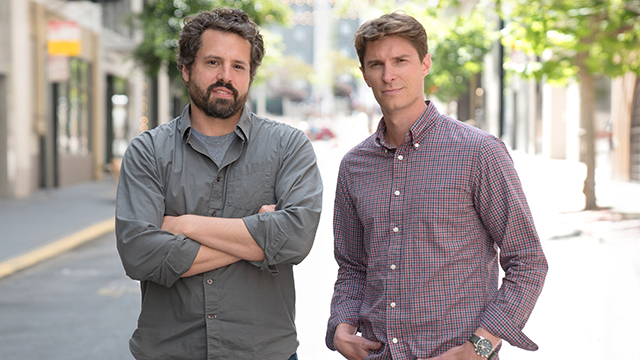
Partners on Audi since 2011, they shifted into another gear with the account this past year. Their triumphs include the “Live to Drive” campaign, featuring the TV spot “Desolation” and an Airbnb listing for the Death Valley house featured in it (which booked up, staggeringly, in less than six seconds). Just as impressive was “Duel,” the virtuosic reverse-slow-motion spot featuring battling hotel valets, which aired during the three presidential debates.v
“Hollywood’s got the whole epic fight thing pretty locked down. To make one of our own that still felt fresh and original, while also delivering political commentary on the 2016 election, was a crazy undertaking,” says Keats. “We had no idea how well it would work in reverse until we saw the first cut. Also, nothing about it felt like an ad. That’s usually a good sign that you’re doing something right.”
Keats’ work is informed by the belief that most people just don’t like ads, plain and simple. “So the least you can do is try to make something interesting. Anything less and you’re just wasting their time,” he says.
Miller’s advice to fellow creatives is succinct: “Be hungry, be a student, be a sponge, and most importantly, be humble.”
Louie Calvano and Samantha Bordignon
Creative Director and Senior Copywriter, DigitasLBi

This pair helped bring to life the “Care Counts” campaign for Whirlpool, which put washers and dryers in schools to help kids who don’t always have access to clean clothes—and who often skip school at a result.
“Seeing this kind of creative thinking in action reminds me of the potential our work can really have, that creativity is responsible for more than just entertainment or beauty,” Bordignon says of the One Show gold Pencil winner. “When you apply it to real problems, creativity can be a potent tool for change.”
She finds creative inspiration in diversity. “When you’re living every day in the same bubble, it’s easy to forget that this world is a huge fucking place!” she says. “There are so many people out there with ideas and life experiences that are nothing like your own. Each one can push your brain a little further outside its comfort zone.”
“Pay attention to life. That’s where the ideas are,” adds Calvano. “If you actually listen to people and honestly care about people, you get so much genuine insight to draw from and make the work more resonant. Whether it’s for laughter or tears, if all you know is yourself, you’re going to have a hard time connecting with others.”
Brian Farkas and Tylynne McCauley
Associate Creative Directors, 180LA
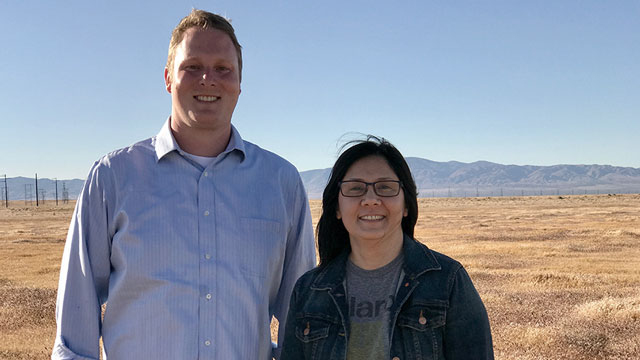
This ex-Pitch pair were the force behind Boost Mobile’s brilliant “Boost Your Voice” campaign, which turned Boost stores into polling places in low-income areas to combat unequal voting access. That work will undoubtedly earn them more Cannes Lions to go with the two golds they won at RPA for Honda’s Project Drive-In.
“Voter suppression is real, and it’s an issue undermining the heart of our democracy. Every American deserves a chance to be heard,” says Farkas. Adds McCauley: “It wasn’t just an ad. It was a brand sticking up for its customers through a civic action.”
Going beyond ads is a theme for this team.
“I’m a big believer in ‘action over ads,’ using advertising to do something, not just say something,” says Farkas. “This type of work is almost always a huge pain to make, because there aren’t any standard processes for it. It requires persistence and a willingness to figure things out from the whole team. But in the end, it’s worth it for the client, the agency, and most importantly, the people you’ve been able to affect.”
McCauley’s advice is to “stay unattached to your ideas, most of the time. You’ll know when that special one is worth fighting for, suffering over, and never giving up on. Great ideas ignite the fire in your heart.”
Matt Edwards and Wes Phelan
Creative Directors, Johannes Leonardo
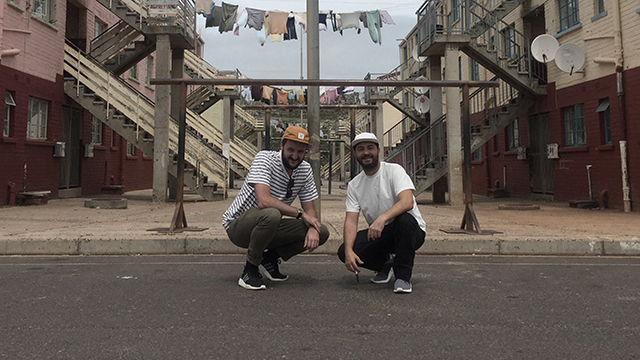
These South Africans were creative directors at Y&R Prague and MetropolitanRepublic in Johannesburg before arriving at Johannes Leonardo, where they’ve headed up global creative on Adidas Originals for three years—creating striking spots like “Your Future Is Not Mine” and “Original Is Never Finished.”
“Seeding a long-term strategy with the strikethrough device and sticking to it has ensured that the work we are doing is becoming more impactful year after year,” says Edwards. The “Original Is Never Finished” spot, with 25 million YouTube views, “is an example of how the brand’s design philosophy of the past empowering the future can be brought to life in a fresh way for a new audience with a culturally relevant theme in today’s fast-paced meme society,” adds Phelan.
Phelan’s creative philosophy is that “the best pieces of work do not mirror culture, they create it. In order to create culture, you first need to understand it. And that requires an incessant curiosity about the world and marketing’s evolving role in it.”
“If creativity is about solving a problem, surely if you ask the right questions you are more likely to get the right answers,” adds Edwards. “So my creative philosophy makes the why more important than the how. After that, it’s important to remind ourselves that the world needs more music and less noise.”
Lori Martin
Creative Director, Innocean
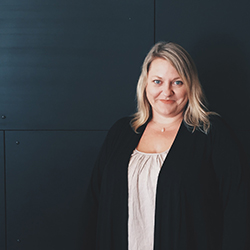 A former Y&R and Wunderman copywriter, Martin joined Innocean in 2012 and helped to establish the agency’s CRM capabilities. She now leads teams across social media, digital and CRM, shaping the social voice for flagship client Hyundai in particular.
A former Y&R and Wunderman copywriter, Martin joined Innocean in 2012 and helped to establish the agency’s CRM capabilities. She now leads teams across social media, digital and CRM, shaping the social voice for flagship client Hyundai in particular.
Martin and her team created the first automotive flipbook on Snapchat and Instagram to launch the new Hyundai Elantra. She was also behind the Snapchat and Instagram Stories push teasing “Operation Better,” Hyundai’s ambitious Super Bowl ad, which was filmed and edited during this year’s game.
“For me, creativity is like a puzzle or riddle you have to figure out,” she says. “What works in one space may not in another. So, flexibility and simplicity matter.”
Case in point is her pharma spoof “Range Anxiety,” an online video that helped launch the Sonata Plug-in Hybrid. “Instead of just talking about MPGs and tech, we leaned into the insight that people hesitated to buy electric cars because of their fear of limited range,” she says. “Pharma was a natural fit, and a fresh way to break through in the category.”
Ken Marcus and Sean Riley
Senior Copywriter and Creative Director, The Martin Agency

Marcus and Riley are the creators you don’t know of the Geico work you know so well—the “It’s Not Surprising” and “It’s What You Do” campaigns, which recently helped the insurer have its best year ever in new policies.
“It’s one thing to do award-winning work. But it’s pretty awesome when you can do recognized, national work that really moves the needle for clients,” says Marcus. “It’s weird when it all works the way it’s supposed to.”
“Keeping the campaign fresh is a priority because it runs everywhere and people are going view it multiple times,” adds Riley. “It can be intimidating, but here’s nothing better than sitting in a bar or movie and seeing people laugh at our silly jokes.”
Marcus values advertising that’s simple yet unexpected. “Particularly visually,” he says. “In this day and age, when most folks absorb their media by scrolling or skimming through, we need to be as visually surprising as possible. Something has to really stop them in their tracks before they’ll pay attention. Also, I loathe overthinking. Paralysis by analysis. It’s the death of fun, spontaneous ideas in our business. I really pride myself on ‘underthinking.’”
Riley’s approach is to be open to any and all ideas in the beginning. “Throwing around as much stuff as possible, having fun, and trying not to overthink,” he says. “Always with the goal of getting past the mundane and finding a surprising twist. Then when it’s time to edit, be the cold-hearted bastard the advertising world desperately needs you to be.”
Paddy Fraser
Creative Director, CP+B L.A.
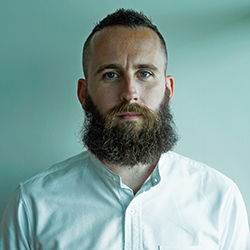 To Fraser, escapism is a key virtue of advertising in the age of Brexit and Trump. “The world is serious enough,” says the Brit, who joined CP+B in 2015 after seven years at Mother London. “Affording people a moment of escape, entertainment and added value in the present cultural climate seems like the right, and kind, thing to do.”
To Fraser, escapism is a key virtue of advertising in the age of Brexit and Trump. “The world is serious enough,” says the Brit, who joined CP+B in 2015 after seven years at Mother London. “Affording people a moment of escape, entertainment and added value in the present cultural climate seems like the right, and kind, thing to do.”
Case in point—the apocalyptic “Tomorrow is Overrated” spot for Jose Cuervo, which showed tequila drinkers toasting the end of the world in a desert bar by dancing to Elvis Presley’s “It’s Now or Never.” “We did our best to distill the brand into its purest essence,” says Fraser. “And tell a story where people are living fearlessly, and fully, in the present moment without worrying too much about what tomorrow might bring. In the context of the world today, that spirit seemed somewhat prescient.”
Fraser’s creative philosophy includes a simple litmus test. “I like ideas with an inherent truth that make people feel something,” he says. “Something I ask myself, and possibly say out loud too, is, ‘If you weren’t working in advertising, would you honestly bother watching or doing the thing you’re making?’”
Dave Brown and Daniel Bonder
Creative Directors, BBH New York

Brown and Bonder won the Integrated Grand Prix at Cannes for their Netflix House of Cards “FU16” campaign, which included a Frank Underwood campaign ad that ran during a real Republican debate. They’re also behind the Seamless “How New York Eats” ads, which have a wonderfully witty rapport with New Yorkers.
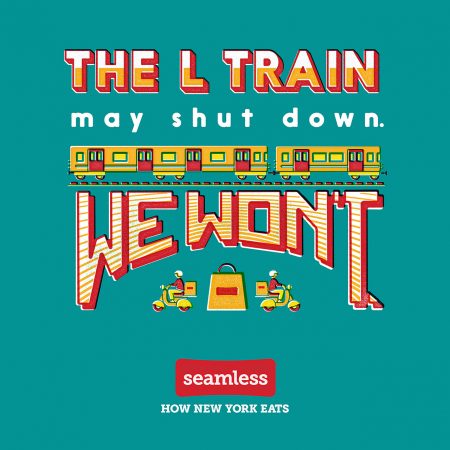
The Netflix work “opened our eyes to the power of hijacking a moment in culture,” says Bonder. “We didn’t have to wait for an award show or a client recap to know if it was successful or not. We watched in real time as the Internet exploded. In a pretty insane political news cycle, our idea became the news, and that was the greatest reward.”
The Seamless ads, meanwhile, “speak to New Yorkers like the real, often hangry people they are,” says Brown. “The city now looks to the brand for their take on everything New York.”
Look for some PlayStation work from the pair next. “Our work always tries to answer one question: Will people care?” says Bonder. “As long as we are honest with ourselves and the work, then we usually come out with something we are proud of. If not, we hire a digital influencer.”
Colin Selikow, Creative Director, Leo Burnett
Vincent Cook, Executive Creative Director, Energy BBDO
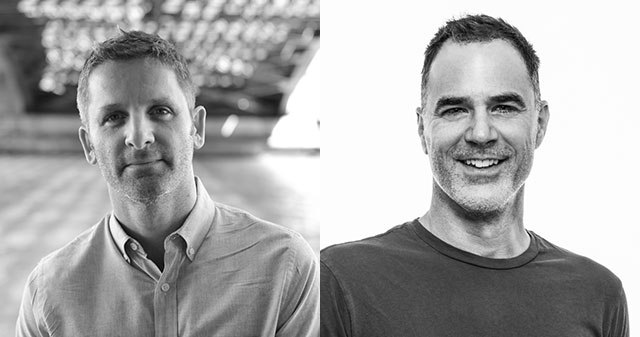
Partners at Leo Burnett until Cook left this year for Energy BBDO, these two were central to many of Burnett’s most iconic ads over the past decade-plus, from the famous McDonald’s sundial billboard in 2006 to UnitedHealthcare’s dirty-dancing couple in 2015.
Their big triumph this year was the delightful “Ostrich” spot for Samsung’s “Do What You Can’t” campaign, starring a flightless bird who ends up soaring thanks to a Samsung VR headset. “It’s the story of a dreamer told in an unexpected, moving way,” Selikow says. “In my mind, it is pretty close to perfect—story, character, product, music and craft all in balance.”
The ad has 24 million YouTube views, and got people talking, which is always the goal, says Selikow. “Don’t create for the industry,” he advises. “If your cab driver is talking about it, you’re doing something right.”
Sam Luchini and Roger Baran
Creative Directors, Goodby Silverstein & Partners
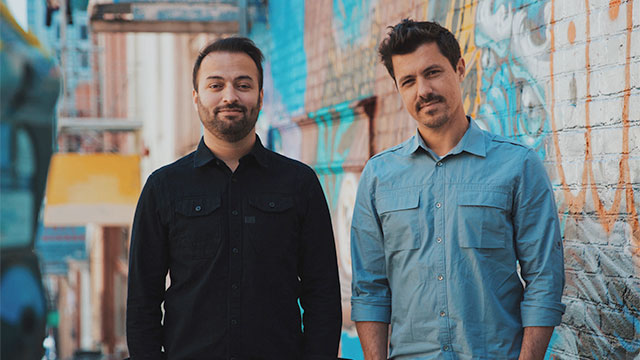
This Brazilian pair are obsessed with ideas that haven’t been done before.
“It’s not only about the message but also a way of doing, a technique, a new technology or a new use of an existing tool,” says Baran. “We look for something that makes people ask, ‘Can you do that?’ Or ‘How do you do that?’ That’s when we know we have something interesting. We like to say, ‘If you know how to do it, don’t do it.’”
Among their recent innovations are the “Dreams of Dalí” VR project for the Dalí Museum, and the “Party Safe” bag for Frito-Lay’s Tostitos, released around this year’s Super Bowl, which could detect alcohol on your breath and also call you an Uber.
The Dalí work “became a great contribution to the museum’s permanent collection, and it’s a new way for people to experience art,” says Luchini. The Tostitos bag was “a true innovation with a cause,” adds Baran. “In a way, it showed the endless possibilities of packaging and how it can impact a brand’s message.”
Ben Cascella and Nigel Gross
Associate Creative Directors, KBS
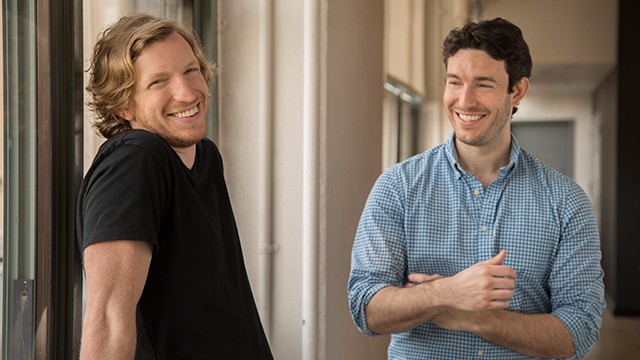
Cascella and Gross, partners at KBS for five years, were responsible for two of the agency’s most high-profile pieces of work in the past year: BMW’s “Eyes on Gigi” featuring Gigi Hadid, and Beautyrest’s “Suite” spot starring Tom Brady.
The Gigi spot gameified 360 video, and ended up being YouTube’s most viewed 360-degree ad of 2016. “It’s one of the only things I’ve done where everyone involved seemed equally excited about it,” says Cascella. Adds Gross: “It was the closest an execution has ever gotten to the original vision for me.”
The pair are currently working on a nationwide BMW driving competition called Ultimate Driver. “Like any creative, I just try to make work I’m proud of. That will always be the ultimate challenge,” says Gross. “I work until I like something,” adds Cascella. “And I never like anything, so I end up working a lot.”
This article first appeared in www.adweek.com
Seeking to build and grow your brand using the force of consumer insight, strategic foresight, creative disruption and technology prowess? Talk to us at +9714 3867728 or mail: info@groupisd.com or visit www.groupisd.com

